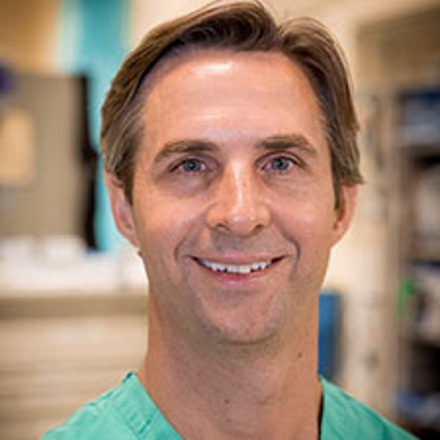
In the News
The Opioid Crisis: Prescribing Buprenorphine in Hospital Emergency Departments to Save Lives
- Emergency Medicine News
-
Focus Areas
Health Care & Population Health -
Issues
Rural Health -
Expertise
Health Education & Promotion, Outreach & Dissemination, Technical Assistance -
Programs
Bridge, CA Bridge -
Strategic Initiatives
Opioids

“More than half a million people have died from overdoses that involved opioids since 2000—that’s more than the population of Atlanta or Kansas City.
The alarm has been sounded, but deaths from opioid overdoses continue to hover around 70,000 a year, a number that has nearly doubled since the period between 2017 and 2019, despite the investment of millions of dollars and the passage of three federal laws.
“We continue to be in an epidemic of opioid overdose,” said Gail D’Onofrio, MD, the Albert E. Kent professor of emergency medicine and a professor of epidemiology (chronic diseases) and medicine core addiction at the Yale School of Medicine. The year 2022 was the first time in decades that the number stayed relatively flat or increased only a little bit. “While this is tentatively good news, we are still losing nearly 200 lives every day.”
ED visits due to known or suspected opioid overdose continue to rise as well. A study of EDs in six states found that opioid overdose visits increased by 10.5 percent and opioid overdose rates increased by 28.5 percent despite a 14 percent decline in all-cause ED visits during the COVID-19 pandemic. The rate went from 0.25 per 100 ED visits from 2018 to 2019 to 0.32 per 100 ED visits in 2020.
A landmark randomized clinical trial led by Dr. D’Onofrio was the first to show why emergency physicians should prescribe buprenorphine in the ED. Multiple studies have since documented that it is safe and effective, not to mention that it increases engagement in addiction treatment, reduces self-reported illicit opioid use, decreases the risk for injection-related complications like infectious disease, abscesses, and endocarditis, and decreases the need for use of inpatient addiction treatment services.
Linking to Care
“The ED is the great access point for all people to receive care, and there couldn’t be a need more acute than the mortality of people with OUD who go untreated. We know that the 12-month mortality rate after having been seen in the ED for a nonfatal overdose is approaching five percent,” Dr. D’Onofrio said, citing an Annals of Internal Medicine study. “No other illness has that potential for morbidity and mortality; the closest is probably an acute heart attack. Given those stakes, there should be very low barriers for treatment.”
The America College of Emergency Physicians made medications for opioid use disorder part of its consensus recommendations for overdose treatment in the ED two years ago. But a report by the National Institute on Drug Abuse Clinical Trials Network said uptake of prescribing buprenorphine in the ED remains suboptimal. One of the report’s authors, Ethan Cowan, MD, said the January 2023 elimination of the X-waiver requirement likely will not change the picture significantly.
“There are still a lot of issues related to ED-initiated buprenorphine that need to be resolved, and a lot of barriers still exist,” said Dr. Cowan, a professor of emergency medicine at the Icahn School of Medicine at Mount Sinai and the director of research and community engagement for the emergency department at Mount Sinai Beth Israel Hospital in New York. “The EDs that really bought into buprenorphine prescribing back in 2015, the core group of early adopters that are mostly academic and urban, are pretty well-situated. They have created protocols and pathways to initiate buprenorphine in the ED and then get patients linked into follow-up care. But how do we generalize this at a national level and make this part of standard operating procedure in all EDs?”
More than half of enrollees with substance use disorder in a nationwide study that she is currently leading have reported unstable housing in the past year, and roughly 30 percent are currently unhoused or unsheltered.
“We are also finding that most of these individuals are either underinsured or uninsured, and 80 percent are not employed,” Dr. D’Onofrio said. “So this vulnerable population is very difficult to manage. They need treatment in conjunction with shelter and access to food and job training. That’s what makes this epidemic so difficult.”
Low-Barrier Treatment
Most emergency physicians receive almost no formal training in addiction care in medical school or residency, Dr. Cowan said. “Then you give them a medication they almost never use and throw possible complications on top of that, people are less likely to use it,” he said. “But there is an increasing number of resources available for individual emergency physicians to learn and EDs to get these programs up and running.”
Two of the most established and successful programs have protocols available on the internet for public use: Yale’s ED-Initiated Buprenorphine resource and Bridge, which has led the nation in expanding medication for addiction treatment in emergency departments and is now in place in 85 percent of California hospitals.
Emergency physicians can also use BUP Initiation, a free app that walks them through diagnoses, how to use the Clinical Opiate Withdrawal Scale, and the treatment and referral process. It also suggests ways to motivate a person to accept treatment. Bridge aims to galvanize physicians and communities to promote effective, just, and humane responses to people who have been excluded from the health care system based on three principles:
- Providing low-barrier treatment by making medication for addiction treatment (MAT) rapidly accessible in the emergency department and all hospital departments without complicated restrictions and procedures.
- Creating a welcoming culture in the hospital that does not stigmatize substance use and recognizes racial disparities in access to care and promotes harm reduction, trauma-informed practices, trust, and respect.
- Linking patients to ongoing care through active support and follow-up and reaching out to community organizations and people who use drugs to increase access to care.
Nearly 237,000 patients had been seen for substance use disorders as of mid-2023, more than 175,000 were identified with opioid use disorders, and more than 76,000 were provided with buprenorphine.
“CA Bridge shows that you can actually do this and make it work,” said Dr. D’Onofrio. “They went from just a few hospitals in 2018 to now having 278 in the state offering some sort of ED-initiated buprenorphine program.”
A study of Bridge’s first cohort showed that it was feasible to adopt low-barrier medication-assisted treatment in the ED.
Lean In
Andrew Herring, MD, an emergency physician and the associate director of research at Highland Hospital-Alameda Health System in Oakland and the founder of the CA Bridge program, said the problem comes down to resources and support, not at the ED level or even the hospital level but much higher.
“Our experience with CA Bridge dispelled the myth that clinicians had any substantial resistance to providing buprenorphine in the ED,” he said. “Most California hospitals, when given a choice, implemented reasonable buprenorphine programs. Patients and providers adopt it willingly. It’s convenient, and it works. So why is it not taking off broadly? That’s a disingenuous question in many ways.

The fact is that we have not chosen to expand access to evidence-based addiction medicine as a new entitlement to the public. We chose to expand Medicare to include end-stage renal disease, so people would always have access to dialysis. We chose to pass the Ryan White Act to ensure access to HIV care for people living with HIV and AIDS. But to date we have not chosen to expand either Medicare or Medicaid to support the sustained effective implementation of a medical infrastructure to treat substance use disorders. Until we do that, the blame lies squarely and exclusively at the feet of the stakeholders that drive the financial underpinnings of the health care system.Andrew Herring, MD
Bridge program at the Public Health Institute
The resources may be running out, even in California. Bridge was launched at 52 hospitals in 2018 with a grant from the California MAT Expansion Project. A state appropriation of $20 million in 2020 extended funding to 206 hospitals as part of the Behavioral Health Pilot Project. A new appropriation of $40 million in 2022 launched the CalBridge Behavioral Health Navigator Program, which has supported 278 hospital EDs in providing MAT and behavioral health navigation to 9500 people each month.”
“But at the end of these grants, it could all end,” Dr. Herring said. “This was a pilot project. We used limited-time funding to show that the positive outcomes were readily attainable with a straightforward project that is nothing special or fancy. But there is no current economic model that financially incentivizes a health care system to proactively reach out and provide high-quality care to patients with SUDs. We launched the plane, and we’re running out of gas.”
To read the full article, click on the link below.
Originally published by Emergency Medicine News
More Updates
Work With Us
You change the world. We do the rest. Explore fiscal sponsorship at PHI.
Support Us
Together, we can accelerate our response to public health’s most critical issues.
Find Employment
Begin your career at the Public Health Institute.



